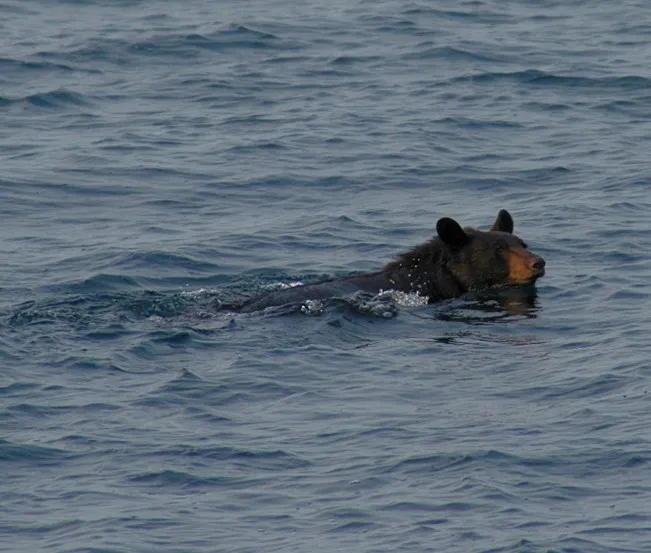 Black bear swimming. PC: NPS Neil Howk
Black bear swimming. PC: NPS Neil Howk
The Apostle Islands are a wonderful place to enjoy nature and discover an abundance of wildlife. The secluded islands are an important habitat for numerous bird species, mammals, plants, amphibians, and aquatic species. Wildlife come to the islands in a variety of ways. Some swim, others cross the ice, and some manage to hitchhike to the islands on boats. Black bears have been found on most of the islands.
Rare, Resilient, and Swimmers: Mammals of the Apostle Islands

Snowshoe hare, with its large feet that prevent it from sinking into the snow when it hops and walks.
Mammals on the Apostle Islands are all resilient: they had to either swim or walk across frozen Lake Superior during harsh winters. Interestingly, this means you won’t see common species like raccoon, skunks, and chipmunks on the islands. Instead, you’ll find swimmers like whitetail deer, black bears, and beavers. Snowshoe hares, with their oversized winter feet, can be seen darting through the undergrowth.
5 Pieces of History: See on an Apostle Islands Grand Tour
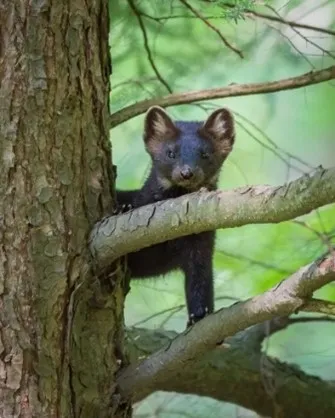
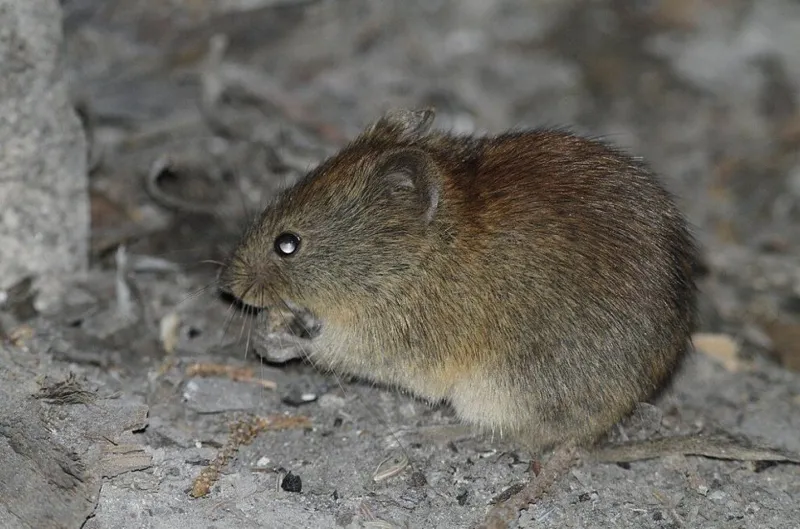
American marten and its favorite prey, the red backed vole
In general, the Apostle Islands are a haven for carnivores, with ten out of the twelve Wisconsin meat-eaters calling the park home. One particularly interesting resident is the American marten, a state-endangered critter with a taste for red-backed voles – the most abundant small mammal on the islands. You may also catch glimpses of creeping coyotes, cunning red foxes, or adorable otters.
How to See Them: Day and Overnight Adventures
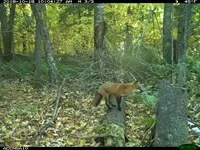
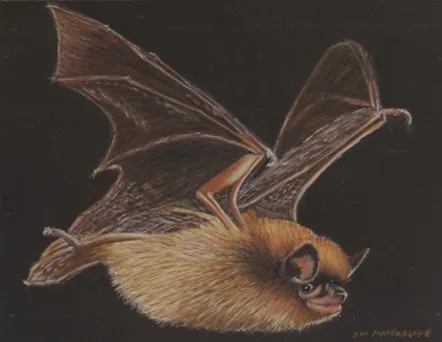
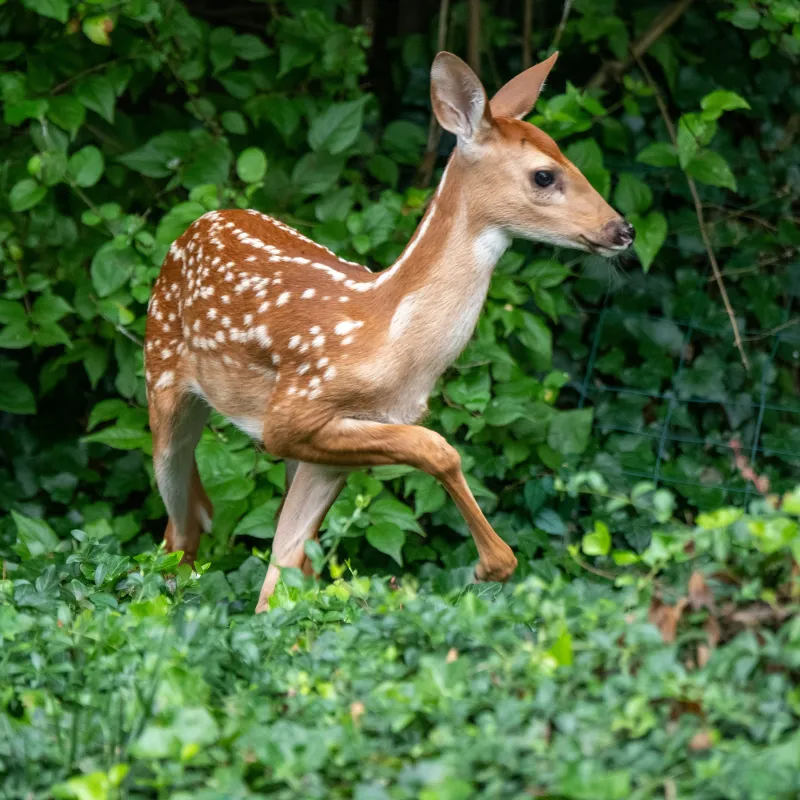
Red fox, species of bats and white-tail deer are Apostle Island inhabitants
The Apostle Islands National Lakeshore is famous for its scenic hiking trails and excellent camping options. Hop aboard your Apostle Island Cruise shuttle to explore wildlife on Stockton Island and Oak Island excursions. Enjoy the incredible Stockton Island Hiking Trails. Oak Island boasts some of the highest population densities of black bears. Keep your eyes open and you may see loons, bats, beavers, coyotes, red fox, and white-tail deer roaming the islands — especially when you stay overnight.
Why Apostle Islands are a Camping Lover’s Dream
Things That Wiggle: Elusive & Vibrant
 Harmless to humans, the Northern Ringneck snake with its colorful patterns.
Harmless to humans, the Northern Ringneck snake with its colorful patterns.
Apostle Islands provide prime habitat for amphibians that include mixed hardwood and boreal forests, bog, lagoons, and streams. You could see Spotted Salamanders, with their bright yellow spots that act as a warning sign to predators of its defensive, toxic glands. Wood Frogs, Blue-spotted salamanders, and Red-backed salamanders are found in the moister forest, while Mink Frogs and Northern Leopard Frogs inhabit pong and lake edges. Watch for turtles basking in the sun on a lakeside log – maybe you’ll even catch a Painted Turtle with its vibrant red markings. Keen eyes may even spot the camouflaged Gray Treefrog clinging to a leaf, its sticky toe pads helping it climb.
Learn More & Book Apostle Islands Shuttles & Tours
Birdwatchers’ Paradise: Endangered Nesting Areas & More
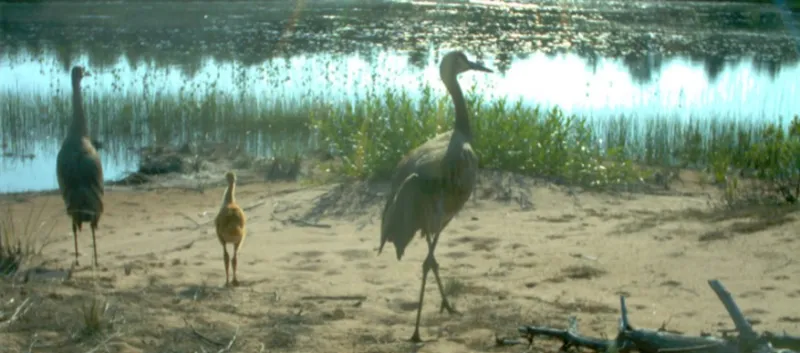 Sandhill cranes on the Apostle Islands National Lakeshore
Sandhill cranes on the Apostle Islands National Lakeshore
PC: National Park Service
The Apostle Islands National Lakeshore is one of the best spots for birdwatching in Wisconsin. Located on the southern shore of Lake Superior, the area is home to a variety of bird species that rely on the rural habitat for breeding and migration. There are also plenty of songbirds, beautiful in both sound and appearance, such as the Black-throated Green Warbler and Nashville Warbler.
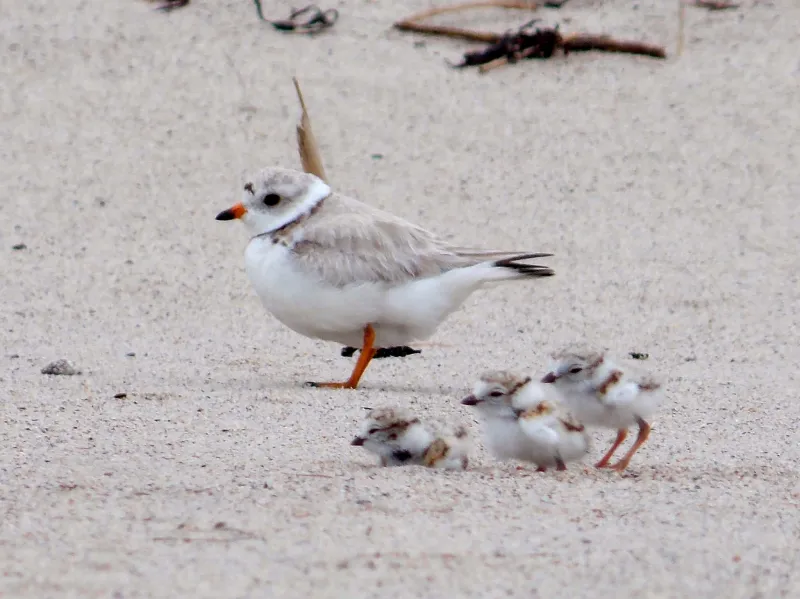 Piping plover nesting area on Stockton Island
Piping plover nesting area on Stockton Island
PC: National Park Service
Piping plovers belong to the endangered species list and their name is derived from their distinct melodious “peep-lo” chirping sound. They are quite adorable birds, with distinctive, round bodies and yellow beaks.
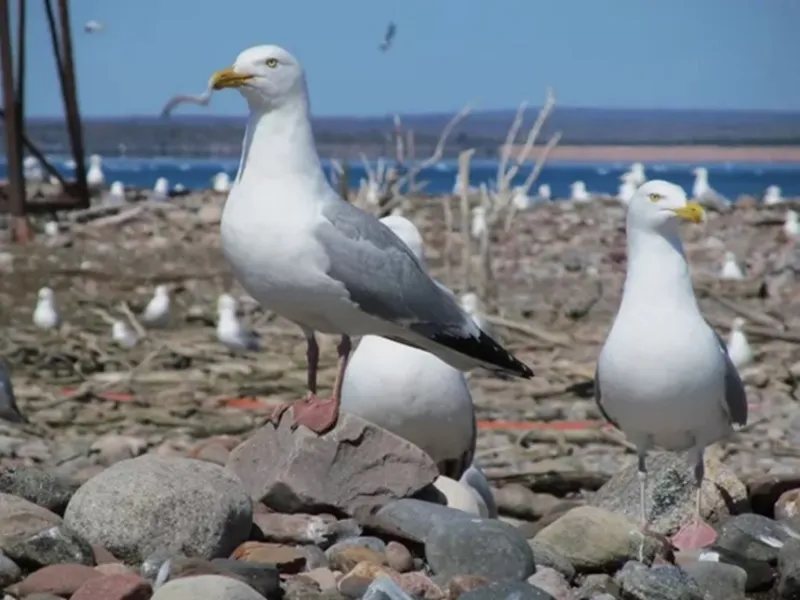 Gulls on Gull Island. PC: National Park Service
Gulls on Gull Island. PC: National Park Service
Gull Island and Eagle Island boast a whopping 88 percent of the lakeshore breeding herring gull population. Since 1990, Great Lakes Inventory and Monitoring Network has conducted annual bird breeding surveys across these islands.
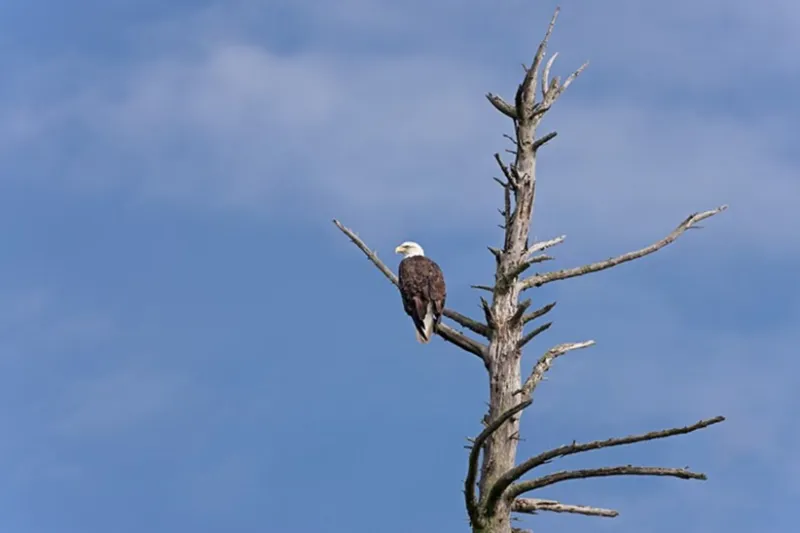
A bald eagle in the Apostle Islands National Lakeshore
PC: Craig Blacklock
During the 1970s, bald eagles were close to extinction across the United States and were nowhere to be found on the Apostle Islands. Thanks to legal safeguards, the population of bald eagles began to slowly rise. Eagles returned to the Apostle Islands in 1980, with the first successfully fledged young in 1983. By 2018, there were 46 active eagle nests on 21 of the 22 Apostle Islands, all except three-acre Gull Island.
The Apostle Islands are a birdwatcher’s delight
Plan Your Trip: Hike, Camp, or Tour
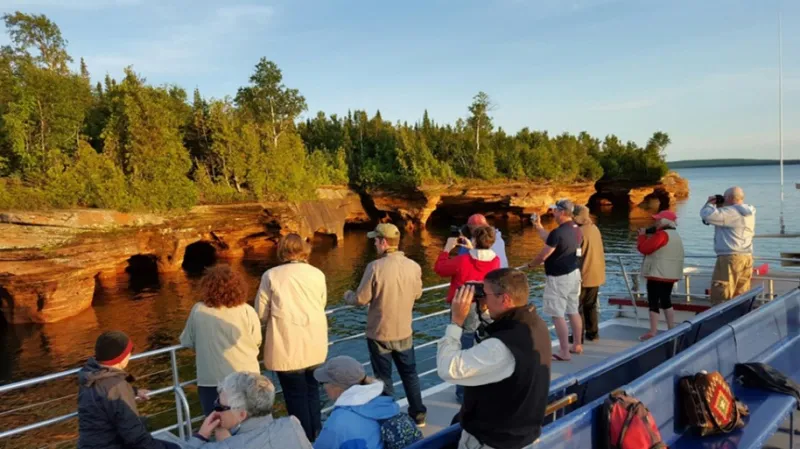
On an Apostle Island Cruise, people take photos on Devils Island.
The Apostle Islands offer an exciting opportunity to experience nature and view wildlife both by boat and land. Whether your choose to hike or camp, or to tour the archipelago by boat — your adventure awaits!
